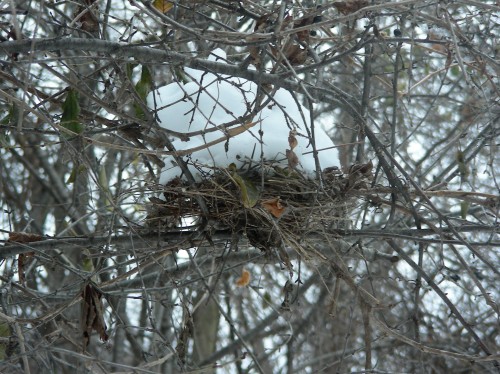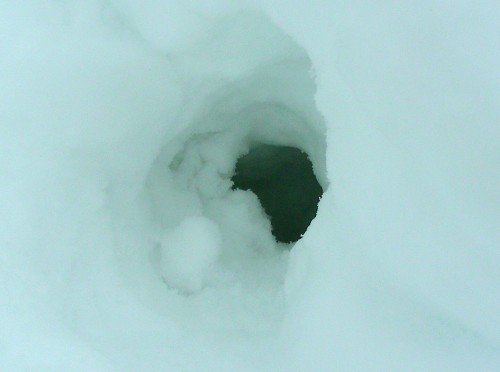|
McGILL BIRD OBSERVATORY |
|||||||||||||||||||||||||||||||||||||||||||||
Welcome to the McGill Bird Observatory weekly report. Click here for a complete listing of our archives. Comments or questions are welcome at mbo@migrationresearch.org.
Bander-in-charge: Marie-Anne
Hudson Notes: This December was one of the snowiest we can remember, greatly reducing 1) the number of birds around (we havenít put out feeders this year since weíre not there enough to ensure theyíre always well-stocked, and thereís nothing worse than setting up a birdís expectations only to fail it when it gets really cold and it needs the boost of easy energy), and 2) the number of times we could walk the census route. So itís not surprising to see such a low number of species spotted on census. The only new species for this winter was actually only heard: a Brown Creeper twinkling away in the forest. A possible record that weíre pretty sure we set this December has nothing to do with birds, but with the amount of snow: every census was run on snowshoes! One of the many great things about snow, aside from a great workout, is that it allows you to notice things you may not ordinarily take note of. For example, MBO is home to lots of birds during the breeding season, but birdsí nests are designed to be as difficult to find as possible. In the winter, when fresh snow has fallen and gotten caught in a birdís nest, it creates a big mound of white amidst bare branches. This makes it very easy to spot, and since you donít have to worry about disturbing an incubating parent, you can permit yourself the time to really look at the nest to see what itís made of and how itís put together. A fascinating pastime! Itís also great to try to figure out what all the critters have been up to in the absence of human activities. During one census, we noticed a large hole off the side of the trail and paused. As if in response, a massive grey squirrel stuck its head out, clucked and ran right at us! Luckily it decided that this was not a great idea and veered off into a nearby tree, where it continued to look at us balefully. Many other mammals have been active as well, evidenced by their tracks: white-tailed deer, red squirrel, voles and mice. We promise the January update will have more bird-related notes, but for now we would like to wish you all a wonderful new year, filled with friends and family (and birds of course)
|


